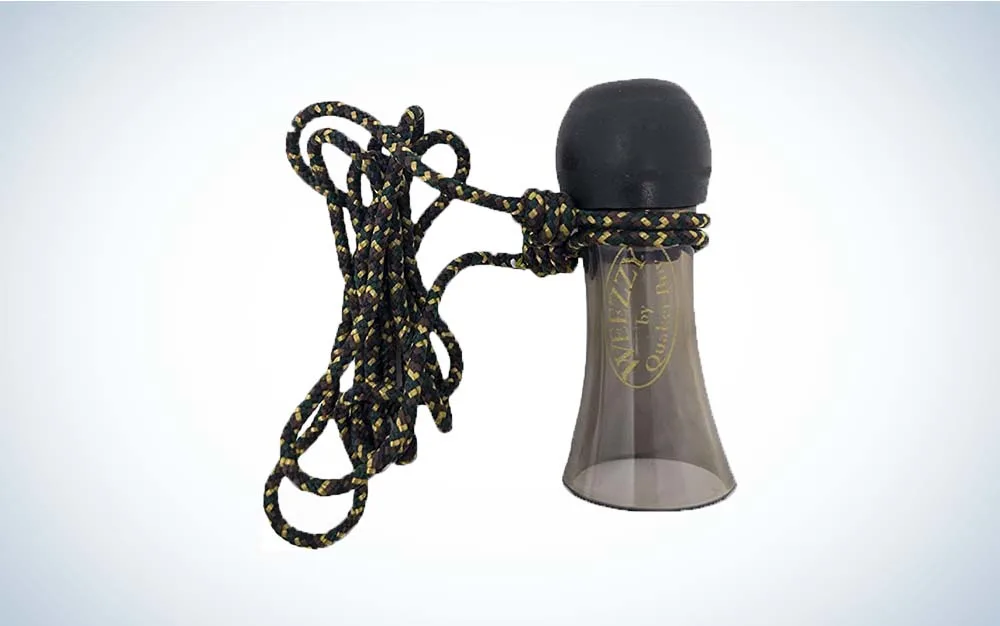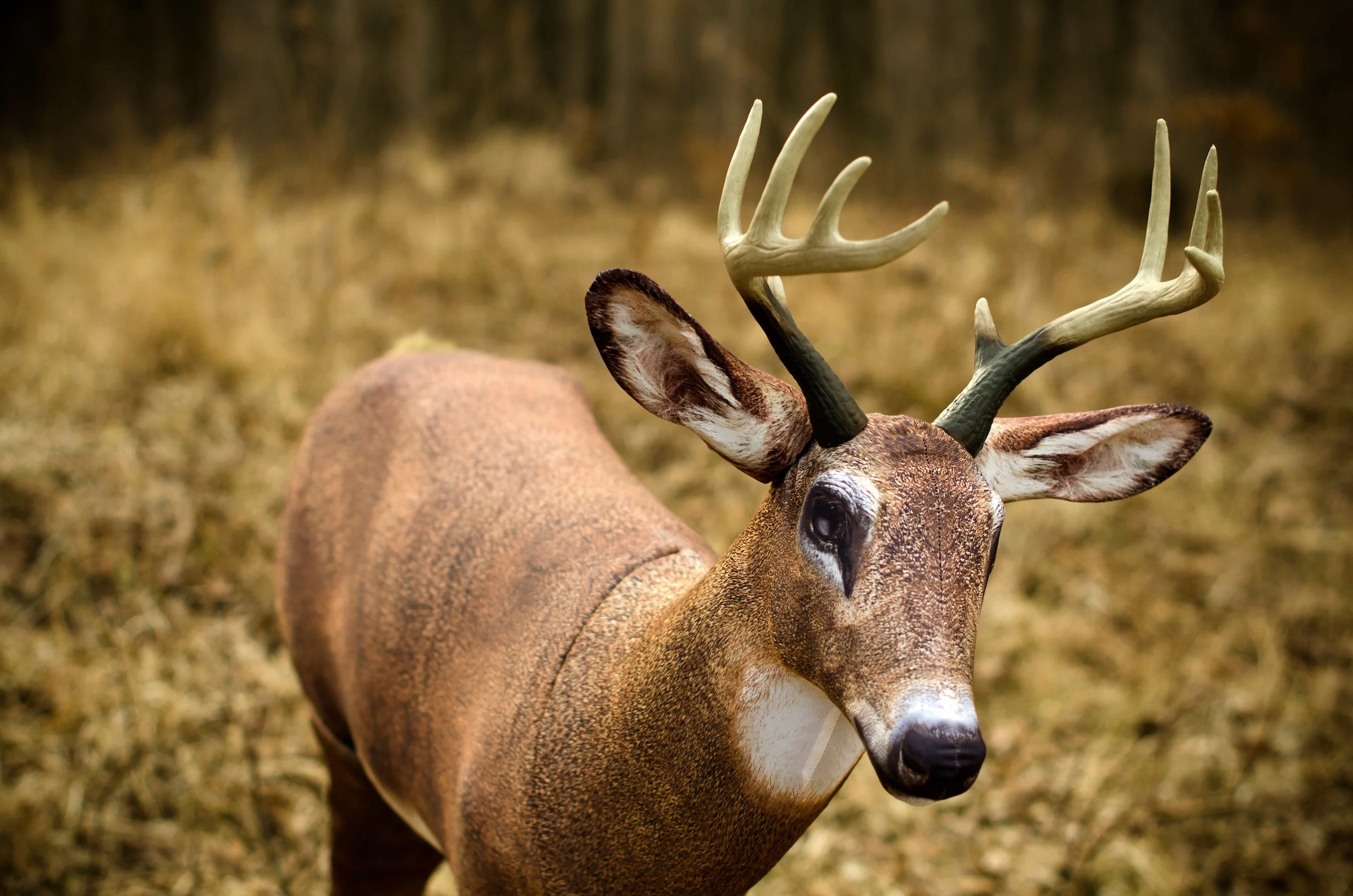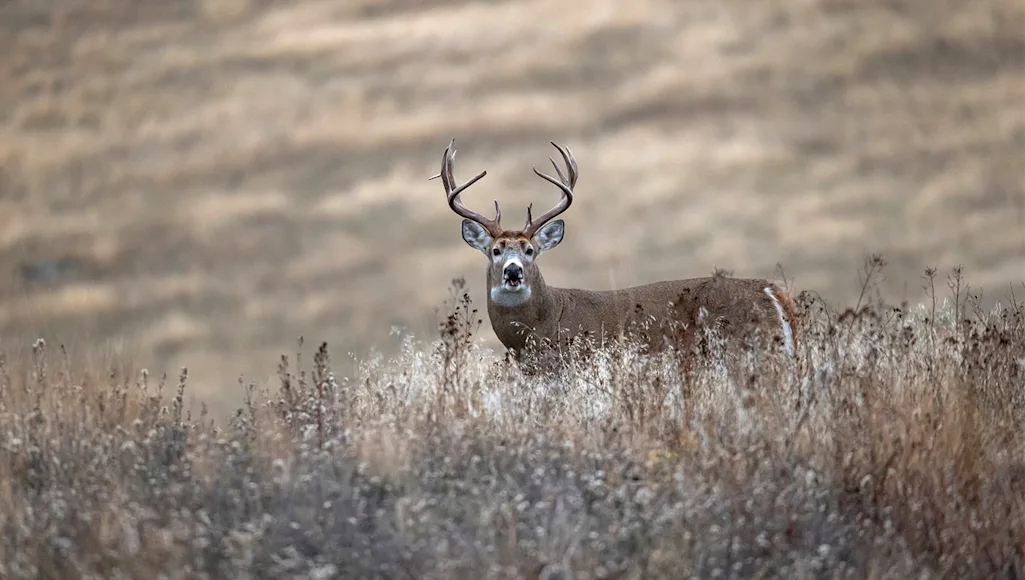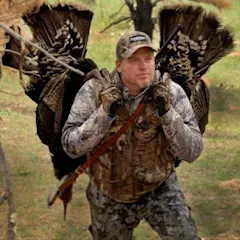Whenever I think of snort-wheezing to whitetail deer, I think of my buddy Tony Peterson, who is a well-known outdoor writer and public-land whitetail hunting expert, not to mention a born skeptic. And I think of Inigo Montoya of The Princess Bride, who says to Vizzini: “I do not think it means what you think it means
.”
Years ago, during a September public-land hunt in South Dakota, Peterson told me that he didn’t buy the conventional wisdom when it comes to snort-wheezing to deer. The call has always been and is still thought of as whitetail fighting words—a super-aggressive challenge that mature bucks make during the heat of the rut. Peterson’s take was, sure, it may be that—but it must be more than that, too, because he’d used the call plenty of times outside of the rut to call in bucks of all ages and sizes.
I thought that was interesting and gave it try on our trip. On two different days, I called in two bucks—a 2-year-old 8-pointer and an older 140-class 10-point buck—by snort-wheezing to them, probably 20 times each. Both deer were a fair ways off when I spotted them. Once I got their attention with a few snort-wheezes, I kept at it until I was sure they were going to close the distance. This was a bow hunt, however, and you know how bowhunting goes: you can call a couple of bucks into bow range but that doesn’t mean you’re going to get a shot at either. I ended up tagging a different buck on the trip, but I went home with a whole new outlook on snort-wheezing, particularly during the early season.
The Snort-Wheeze Call and What It Means
Quaker Boy Weezzy Snort Weeze

A commercial snort-wheeze call like this one can help amplify the sound somewhat.
Most deer hunters are familiar with the snort-wheeze call, but for anyone who isn’t, it is an airy pft-pft-pffffffft sound that you can easily make with your mouth. There are commercial snort-wheeze calls, but they’re nothing more than a small plastic cone meant to amplify the sound, which they don’t do a great job of from what I’ve seen. I’ve never found a good reason to carry one. If you just say pft-pft-pffffffft, letting air pass through your lips and really drawing out the last note, you’ll have it.
So that’s the call, but what does it mean? The answer is: It’s complicated, or at least more so that many think. I have seen a big buck or two snort-wheeze at a rival during the rut, and it sure seemed serious. I’ve snort-wheezed at a few bucks during the rut myself and watched the hair on their backs stand up before they started stiff-legging it toward me. I’ve also watched mature rutting bucks turn tail and tear off in the opposite direction of my snort-wheeze call. So, during the rut, when big bucks are vying for breeding rights, the snort-wheeze really does seem to be the mortal challenge most hunters have been told it is.
But since that hunt with Peterson years ago, I have also snort-wheezed to dozens of early-season bucks and watched them react with perfect nonchalance and/or mere curiosity. This time of year, it seems to be nothing like the mortal challenge it is during the rut. Also, whereas the snort-wheeze is usually associated with dominant whitetails, I’ve watched early-season bucks of every size, from yearling spikes to older deer, come jogging in to the call, with hardly a hint of aggression or fear. In other words, prior to the rut, at least, I do not think it means what most everyone think it means.
When and How to Snort-Wheeze to Early-Season Bucks
What I do think is that because of the prevailing wisdom about snort-wheezing, very few hunters use the call during the early season. But you should—because it absolutely works if you use it under the right circumstances. In fact, I would say that snort-wheezing is far less risky now than it is during the rut. I’ve sent more than one buck packing with the call in November, but I can’t think of a single early-season buck I’ve spooked by snort-wheezing.
I’m not suggesting you climb into your bow stand and start pft-pft-pfffffting every few minutes. It may work occasionally as a blind call, but I wouldn’t use it that way. I think that as a general rule, bucks don’t like to be surprised at close range—not by rattling horns or a decoy or by loud calling. From what I’ve seen, the best time to use a snort-wheeze for early-season deer is when you spot a buck or bucks that are well out of bow range and don’t seem to be coming your way on their own. In this situation, which happens a lot during bow season, you’ve got nothing to lose—and an unexpected shot at a buck to gain.
Perfect Examples of When a Snort-Wheeze Call Works Now

A subdominant buck decoy can help seal the deal on a buck you’re snort-wheezing to. John Hafner Photography
I’ve called a bunch of early-season bucks into bow range by snort-wheezing, but the ones that makes for the best examples are the New York bucks I tagged last fall and the fall befor that
. The 2021 buck was one of four that stepped out of the timber and sauntered over to a mock scrape I’d made at the far edge of a cut cornfield. A short-tined 9-pointer with a big body, he came out last, pushed the smaller bucks around some, and then stood at the top of a little knoll, where he could survey the field and sort of ooze swagger. There was no reason to think he’d take a hard right turn and walk 150 yards to my bow stand. So I snort-wheezed to him a few times until he turned and stared in my direction. I snort-wheezed again, and he lowered his head and started walking toward me, swaying as he stepped. Apparently, the other bucks figured that if the big guy was going, they were, too, and all four wound up right under my stand. At the shot, the 9-pointer ran 50 yards and tipped over.
On last year’s bow opener, from the same stand, I watched an 8-point buck and a bigger-bodied 7 step out of the same timber. The farmer had planted the field into clover, and the bucks were slowly working away from me as they munched the greenery. When they got about 200 yards out, and it was clear they weren’t going to change direction and feed my way, I started snort-wheezing. Both bucks looked over at me a few times, then finally broke and close to 32 yards. When the 7-pointer turned broadside, I took aim—with the wrong pin—and shot right under him.
It was boneheaded move that ate at me, but only for a couple weeks. Because around this time last year, I went to the same spot and put out a subdominant buck decoy. When the 7-pointer, smaller 8-pointer, and bigger 8 pointer I’d never seen before came out into the clover field, they all glanced over at my decoy but stayed put and kept eating. So I started snort-wheezing. For the longest time, they’d just look up each time I called and then go back to munching. But after a while, the bigger 8 would loop up and then take a few steps closer. Eventually, he couldn’t take it anymore. He still-legged it over to my decoy, hair standing up on end, and turned broadside, giving me an easy 20 yard shot.
It was the second buck I’d killed from the same spot in consecutive years during October, and I’m convinced I wouldn’t have put a tag on either without snort-wheezing. But if you want to know what a powerful effect a few snort-wheezes can have on a buck this time of year, we need to go back to that the 7-pointer I missed (much as I hate to revisit it). When my arrow sailed low, he jumped and trotted off 80 yards or so. But after 10 minutes of confused rubber-necking, eventually calmed down. So, I thought, What the hell? and started snort-wheezing at him again. He look up, pawed at the ground, and walked back to 40 yards. It was a little far to shoot at an on-edge buck, and he never gave me a good angle anyway. So, I figured I’ll just give him a week or more to forget about it and try him again. But thanks to the 8-pointer that came to the decoy, I didn’t need to.


